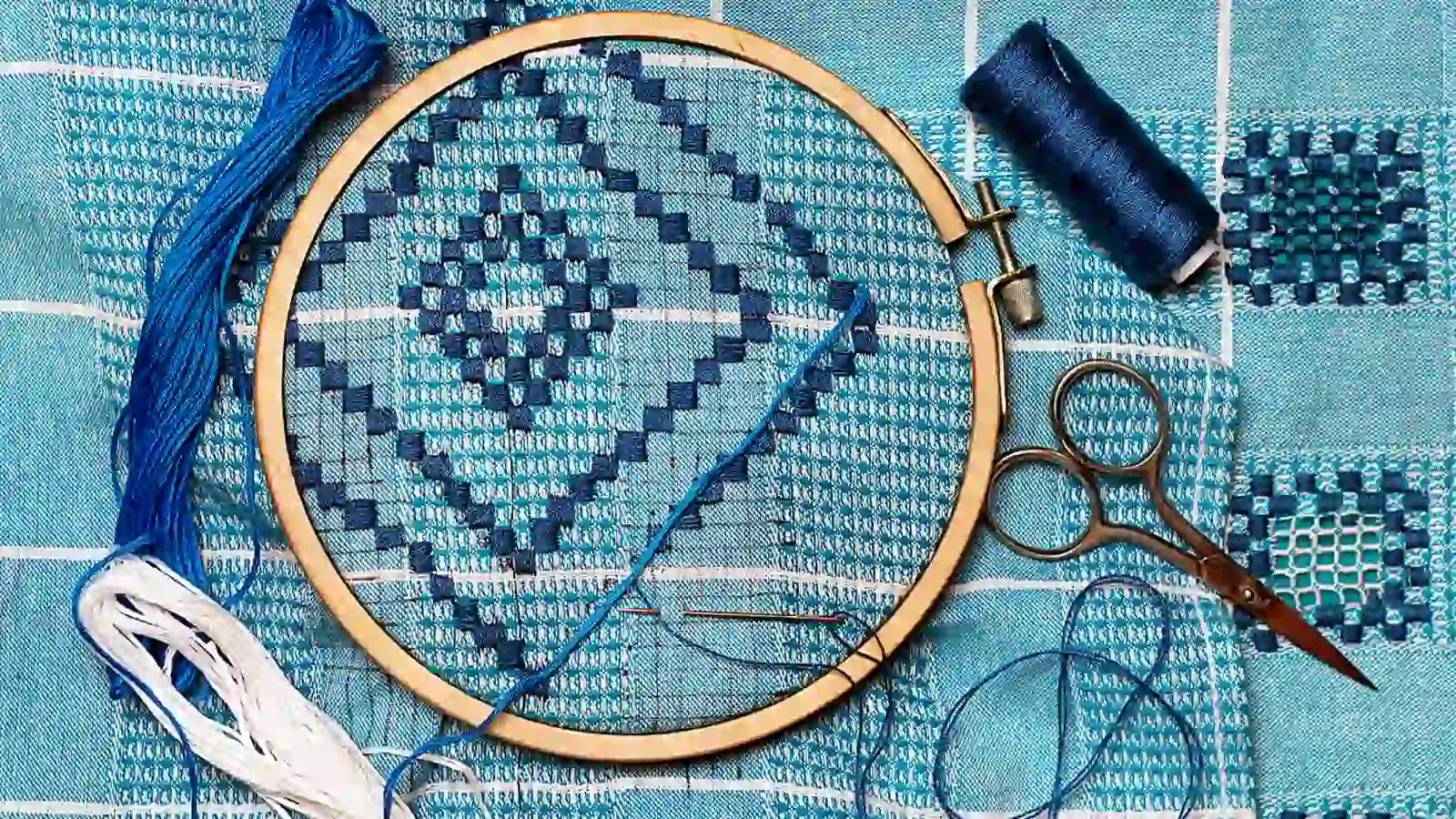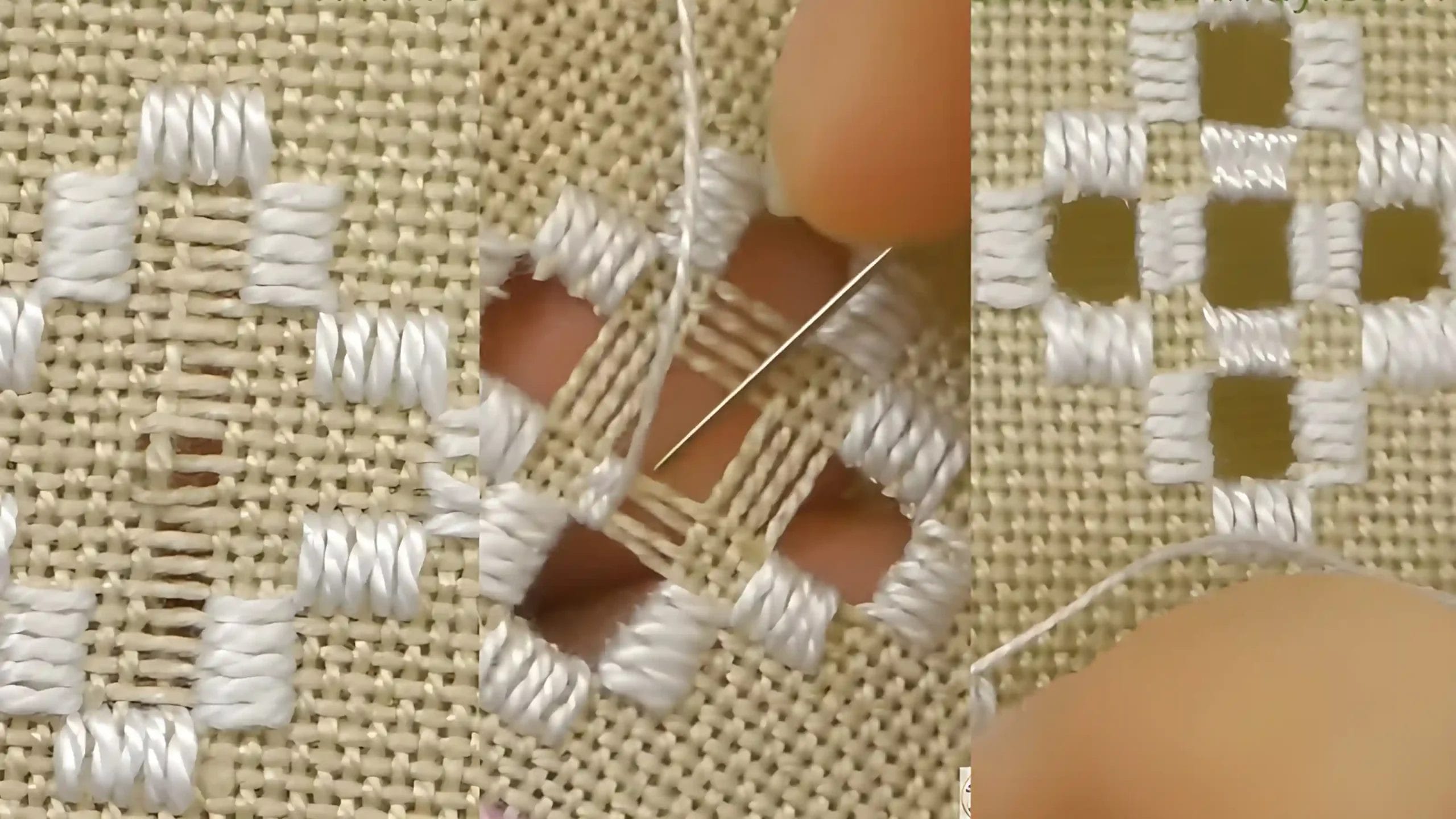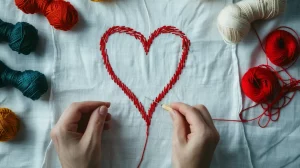Have you heard about the story behind Hardanger embroidery, the intricate traditional craft? Originating in Norway, Hardanger embroidery has a rich history that spans centuries, influenced by ancient Persian and Asian traditions. This technique involves geometric patterns and precise stitching on linen fabric. It is used to decorate household items and religious garments. But what makes Hardanger embroidery so unique, and what secrets lie beneath its intricate designs?
Key Takeaways
- Hardanger embroidery is a traditional Norwegian needlework technique from the 17th century, known for its geometric and symmetrical designs.
- It involves precise stitching on linen fabric using counted thread patterns, often featuring traditional motifs reflecting Norway’s cultural heritage.
- Craft designs require specific techniques and stitches, like Kloster Blocks, Satin Stitch, Needleweaving Bars, and Decorative Stitches.
- Hardanger embroidery is used to embellish household items and liturgical garments.
What is Hardanger Embroidery?

When you learn about Hardanger embroidery, you’ll find a traditional Norwegian needlework technique with a rich history and cultural significance. You’ll learn about its origins, the intricate designs and techniques that define it. Discover the special beauty of Hardanger embroidery, with its geometric patterns and delicate lace-like effects.
Introduction to Hardanger Embroidery
Hardanger embroidery is a traditional Norwegian needlework technique dating back to the 17th century. It uses geometric and symmetrical designs and precise stitching to make beautiful decorations.
As a beginner, you’ll find that Hardanger embroidery is a skill that can be learned with practice and patience. You’ll start by working with linen fabric. You can use counted thread to create intricate patterns with satin stitch and other techniques.
History of Hardanger Embroidery
Uncover the enchanting origins of Hardangersom. The technique of lacework and thread used in ancient Persia and Asia influenced European embroidery traditions.
Hardanger embroidery became popular in Northern Europe by 1700, inspiring variations like Hedebo and Drawn Work.
In Norway, Hardanger embroidery was popular between 1650 and 1850. It used white or cream linen threads on linen fabric for clothing and household linens.
Designs of Hardanger Embroidery
Hardanger embroidery has evolved into a unique style with intricate geometric patterns and traditional motifs that reflect Norway’s cultural heritage.
As you explore traditional Hardanger embroidery, you’ll notice that traditional designs are geometrical. It features shapes like squares, rectangles, triangles, and diamonds. These basic shapes are combined to create intricate and varied patterns.
Common motifs include stars, ships, crescents, and crosses, adding a traditional and cultural touch to the designs. To finish off the intricate patterns, edging stitches like four-sided and buttonhole stitches are commonly used.
Uses of Hardanger Embroidery
Norwegian Hardanger embroidery has many practical uses beyond decoration.
You can use it to decorate household items such as tablecloths, napkin rings, and pillow covers. It can give your home a touch of elegance.
The geometric patterns and intricate thread work also make it an ideal choice for liturgical garments in American Lutheran churches.
What You Need in Hardanger Embroidery

As you prepare to start your Hardanger embroidery project, you’ll need to gather the right materials. You need a 22 count Hardanger fabric, embroidery floss, tapestry needles, sharp scissors, and an embroidery hoop for precise stitches. With these essential tools, you’ll be well-equipped to create intricate and delicate designs.
Hardanger Fabric Count 22
For traditional Hardanger embroidery, use a stable and delicate fabric. This 22-count fabric offers 22 threads per inch, creating an ideal base for intricate stitches.
With Hardanger fabric count 22, you can achieve the perfect balance between fabric and thread. It ensures that your embroidery floss lies smoothly and evenly.
Perle Cotton
Choosing the right pearl cotton is crucial for Hardanger embroidery. It gives the smooth texture and strength needed to create intricate designs.
You’ll need to choose the right thickness of Perle cotton for different aspects of your embroidery. Thicker threads, like number 5, are perfect for creating bold Kloster blocks and satin stitches. On the other hand, thinner threads like number 8 are ideal for weaving bars and other intricate details.
Tapestry Needles
For Hardanger embroidery, precise stitching is important. To achieve this, it is necessary to use the correct tapestry needles. These needles will help you create smooth and even stitches on your fabric.
These specialized needles have blunt points, preventing thread splitting, and large eyes that accommodate multiple strands of thread. Choose the appropriate size tapestry needle for your project. Smaller needles are best for finer fabrics, and larger needles are better for bolder designs.
Sharp Scissors
To do Hardanger embroidery, you will need sharp and high-quality embroidery scissors. These scissors will help you cut fabric threads accurately and achieve the intricate details of this embroidery technique.
An Embroidery Hoop
To create detailed Hardanger embroidery, you need a good embroidery hoop to keep your fabric tight and your stitches even. This tool helps you keep the tension consistent while working on detailed stitching, ensuring even stitch tension throughout the project.
Stitches and Techniques in Hardanger Embroidery

When you learn about Hardanger embroidery, you will find many stitches and techniques that make this traditional craft beautiful. The following stitches are often used in embroidery, especially for beginners.
Kloster Blocks
Kloster blocks serve as the foundation for intricate Hardanger designs. They comprise solid satin stitch blocks that provide a structured framework for the overall pattern. As you work on your Hardanger piece, you’ll use Pearl cotton #5 to stitch these blocks, creating a bold, defined look. You traditionally work over an odd number of fabric threads to create a diamond pattern. It adds to its geometric appeal.
Satin Stitch
You will sew satin stitch blocks in different patterns, from simple squares to complex diamonds. You can use them to create the base of your Hardanger embroidery design.
These blocks are essential for building the intricate patterns characteristic of Hardanger embroidery. Typically worked over an uneven number of fabric threads, satin stitch creates solid blocks of color or texture.
Needleweaving Bars
To create the intricate patterns characteristic of Hardanger embroidery, you’ll need to master the technique of needleweaving bars. This technique involves cutting threads at the base of stitches in each block and weaving them into sturdy, decorative elements. Use 8 Perle cotton to create figure-eight bars in your pattern. Weave diagonally to add texture and make your design more interesting.
Decorative Stitches
Mastering decorative stitches is essential to creating intricate designs. A range of stitches and techniques are employed to achieve the traditional Norwegian craft’s signature look. Decorative surface stitches, such as cross stitch, wheels and spider webs, add an extra layer of intricacy.
Filling Stitches
As you progress from decorative stitches, filling stitches are great for adding intricate details to your Hardanger embroidery designs. These stitches are used to fill in the spaces between Kloster blocks, creating a beautiful, intricate design.
Filling stitches, geometrical in nature, common filling stitches include stars, ships, crescents, and crosses.
Picot
To create a picot in Hardanger embroidery, wrap your thread around the needle before stitching. This will create a small and delicate loop, enhancing the elegance of your design. By combining picots with other stitches, you can create a stunning Hardanger embroidery piece that showcases your attention to detail.
Edging Stitches
Add edging stitches like four-sided and buttonhole stitches to give your Hardanger embroidery pieces a professional and decorative finish.
As you master these stitches, you’ll notice how they elevate your project’s overall appearance. The four-sided stitch is a versatile option that complements the satin stitches in your design.
Meanwhile, the buttonhole stitch provides a secure finish, especially when working with 8 Perle cotton on woven fabric.
When combining these edging stitches with wrapped bars, you’ll create a stunning visual contrast.
Conclusion
Now that you’ve explored the world of Hardanger embroidery, you’re ready to create your own stunning pieces. You are familiar with Kloster blocks, satin stitch, and intricate designs. Now you can embroider household items and make high-quality clothes.



